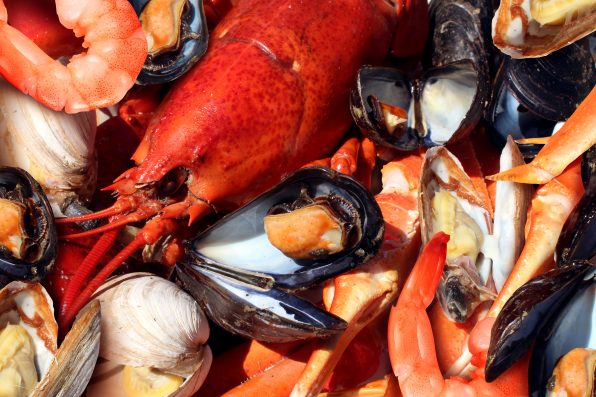Algae That Can Cause Memory Loss Has Been Spotted In Seafood

More than four million tons of seafood are fished from the tropical waters between the Philippines archipelago and delegated to global markets, making the country the 11th largest producer of seafood in the world.
However, scientists have recently discovered two species of microscopic marine algae that produce toxins within shellfish farmed in the region.
The finding has raised concerns for the coastal communities who depend on the industry to make a living.
“It is important to be aware of the toxic potential of these diatoms and to monitor them accordingly, but such efforts must begin by establishing their presence in our waters,” wrote the study authors.
Diatoms are single-celled algae that generate crystalline glass “shells” from hydrated silicon dioxide. These tiny living jewels are part of phytoplankton, which produces up to half of the Earth’s oxygen.
There are millions of diatom species in existence, but only 28 in the genus Pseudo-nitzschia are known to emit a harmful neurotoxin called domoic acid.
Shellfish, sardines, and anchovies can contain domoic acid because their diets are largely made up of marine algae like diatoms.
It is very rare for seafood affected by this toxin to reach our dinner tables. But since human activity has been causing marine algal blooms to become more frequent, the risk of seafood accumulating concerning levels of domoic acid has increased.
If seafood contaminated with too much domoic acid is eaten, it can lead to some serious side effects, from vomiting and diarrhea to amnesia and death.

freshidea – stock.adobe.com – illustrative purposes only
On Canada’s Prince Edward Island, three people died, and at least 100 people were hospitalized in 1987 after an outbreak of amnesic shellfish poisoning.
The shellfish was laced with domoic acid, which caused the permanent loss of short-term memory. The catastrophe was traced back to blue mussels.
Ever since then, many seafood industries have been closely monitoring Pseudo-nitzschia blooms, so cases of contamination are uncommon in many countries.
But recent research has shown that more focus needs to be put toward the Philippines after finding the amnesia-causing diatoms in shellfish from marine farms off the island of Luzon.
More than half of the Philippines’ population resides in Luzon, and shellfish is a major part of many residents’ diets.
Before the new study, there were only two published surveys of the Pseudo-nitzschia genus in the Philippines.
The first recorded local Pseudo-nitzschia bloom was likely from the island of Cebu. In May 2023, another bloom was detected near Pangasinan, Luzon Island.
The research team collected samples of seawater from Sotto’s Tahong Farm in Bacoor Bay and Pagbilao Bay.
They isolated 15 strains of Pseudo-nitzschia from the seawater and analyzed them in the lab. They found two species in the samples that both produced domoic acid.
Hopefully, the discovery will help seafood producers look out for future harmful algal blooms so they can reduce outbreaks of shellfish amnesic poisoning.
The study was published in Diatom Research.
Sign up for Chip Chick’s newsletter and get stories like this delivered to your inbox.
More About:News